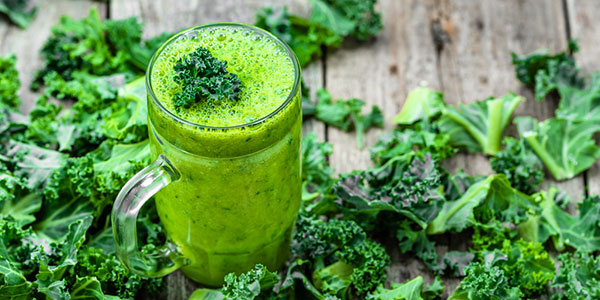
What Is Chlorophyll?
Chlorophyll is the green pigment that provides plants its color and supports their existence, mostly in the process of photosynthesis. As suspected, dark, green leafy vegetables feature natural chlorophyll, including arugula, kale, and spinach. Green peas, leeks, and sugar peas are further recognized sources of chlorophyll. The primary benefits are largely associated with the consumption of plants, as plant-based foods (including green veggies) are shown to manage weight and reduce the risk of chronic disease. But aside from the plant's totality, chlorophyll alone has been explored and suggested to reduce colostomy odor, treat pancreatitis, prevent lung cancer, promote wound healing, lessen skin and lung cancer, and cure bad breath.
Can Chlorophyll Cure Bad Breath?
Also known as halitosis, bad breath describes an unpleasant odor detected from exhaled air. It is most commonly caused by poor dental hygiene as bacteria starts to form, though it may often arise following internal body conditions that effect the liver, metabolism processes, gastrointestinal tract, and other non-oral diseases. The use of chlorophyll for bad breath was provoked in the 1950s, when researcher Dr. Franklin Howard Westcott suggested the administration of the green pigment combatted against both internal body and bad breath odor. But time has certainly passed since the initial claim, so where does chlorophyll stand now on its cure for bad breath?
Current research and evidence modestly supports the link between chlorophyll and bad breath, largely in the form of various mixtures of oils, including olive, parsley, and mint oils. Such combinations and compositions are presented in mouthwashes, chewing gums, and capsules. Taking chlorophyll in liquid or capsule forms may work to internally deodorize the body, thus externally promoting fresher breath. Additionally, chlorophyll-containing parsley is a well-known method to combat against bad breath. Chlorophyll to freshen the breath of canine companions has also been suggested.
Best Prevention Measures
Though chlorophyll may be helpful to cure bad breath, it should not replace a good hygiene regimen. The best treatment mostly relies on the following practices:
•Brush teeth at least twice daily, at least two minutes per each brush session, to remove bad breath-provoking food particles. Brushing your tongue with a toothbrush or with a tongue scraper can further prevent bad breath. Replace toothbrush every two to three months. A soft toothbrush can also be gentle on the gums and enamel.
•Floss at least once a day along and rinse with an antibacterial mouthwash. Plaque will be removed and the breath freshened.
•If wearing dentures, remove at night and clean thoroughly before using the next morning. Dental retainers and mouth guards should also follow good sanitation practices.
•Visit the dentist office at twice a year, or every six months, for a professional cleaning and oral exam. A dentist can help determine or diagnose a condition affecting the mouth.
•Stay hydrated to ward off bad breath. When the mouth lacks moisture, saliva production is compromised, ultimately raising the risk of odor-causing bacteria to form. Chewing mint gum can further stimulate saliva production and promote fresh breath. Additionally, drink water first thing when you wake up, as dry mouth is common upon arising.
•Limit foods noted to provoke foul-smelling breath, including onion, garlic, vinegar, and sugars.
•Smoking cessation, as cigarettes and tobacco products can dry out the mouth, increase the risk of an oral disease, and create bad breath.
References:
Chlorophyll and Chlorophyllin. Linus Pauling Institute. Available at: http://lpi.oregonstate.edu/mic/dietary-factors/phytochemicals/chlorophyll-chlorophyllin.
Composition for the treatment of halitosis. Google Patents. Available at: https://www.google.com/patents/US6555093.
Mool T. Effective Home Remedies for Bad Breath. Colgate Oral Care Center. Available at: http://www.colgate.com/en/us/oc/oral-health/conditions/bad-breath/article/effective-home-remedies-for-bad-breath-0914.







